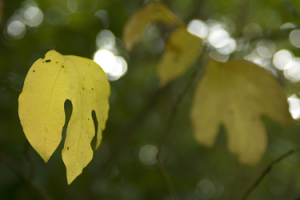Morning Eye Candy: Branches
Posted in Photography on December 20 2010, by Plant Talk
How many branches are there in your family tree? What story do they tell?
Branches (photo by Ivo M. Vermeulen)

Inside The New York Botanical Garden
Posted in Photography on December 20 2010, by Plant Talk
How many branches are there in your family tree? What story do they tell?
Branches (photo by Ivo M. Vermeulen)
Posted in Programs and Events on December 11 2010, by Plant Talk
Larry Lederman, photographer and friend of the Garden (he’s a member of our Advisory Board), has a beautiful exhibit of large-scale tree photographs up right now in the lobby of the amazing Four Seasons restaurant in Manhattan. Stop by when you need a break from all your Christmas shopping!
Larry Lederman at The Four Seasons (photo (of the photo) by Ivo M. Vermeulen)
Posted in Photography on December 8 2010, by Plant Talk
Many of the leaves have left, but that just let’s us see more clearly the shape of the landscape.
Trees, After the Leaves (photo by Ivo M. Vermeulen)
Posted in Photography on December 2 2010, by Plant Talk
The dance of the conifers and the deciduous. That’s in The Nutcracker Suite, right?
Silhouettes (photo by Ivo M. Vermeulen)
Posted in Photography on November 30 2010, by Plant Talk
Ginkgoes get a bad rap. Sure, they can be a bit smelly from time to time, but their beauty in autumn should make up for that, shouldn’t it?
Ginkgo biloba ‘Pendula’ (photo by Ivo M. Vermeulen)
Posted in Photography on November 12 2010, by Plant Talk
How do you move a tree from point A to point B? Very carefully (and with a really big crane).
The root ball tied up (Photo by Ivo M. Vermeulen).
The Katsura tree goes up (Photo by Ivo M. Vermeulen).
Look who popped out of the root ball! (Photo by Ivo M. Vermeulen)
Posted in Exhibitions, Holiday Train Show on November 10 2010, by Plant Talk
That’s sound logic, right? If you go by the decorations at the mall, its been the holidays for moths, so who even knows? In any case, we don’t want to overwhelm you before we’ve bought our turkeys yet either, but the arrival of a few truckloads of giant evergreens is always an occasion.
Earlier this week, The Garden received a special delivery of nine Abies fraseri all the way from NW North Carolina. Better known as the Frasier fir, these trees are popular choices during the holidays for their ability to retain needles long after being cut. The largest, which has been placed in the fountain by the visitor’s center measures a whopping 25 feet high. The eight other trees, which are all about 10-15 feet each, will surround the fountain as well.
Now that the trees have been placed, the next step is decorate them with approximately 400 strands of lights (that’s 20,000 bulbs!) in time for our annual tree lighting ceremony. (stay tuned for more details on that!)
Posted in Around the Garden on November 10 2010, by Plant Talk
 |
Rustin Dwyer is Visual Media Production Specialist at The New York Botanical Garden. |
The New York Botanical Garden is usually closed to the public on Mondays, but that doesn’t mean our groundskeepers and horticulturalists get the day off. Quite the opposite actually. Mondays are the days when the huge projects get done; projects that would interfere with guests enjoyment of the grounds or require large, heavy machinery.
Here’s a short video highlighting the move of a katsura tree (Cercidiphyllum japonicum) from this Monday. It was a pretty big job that required a lot of hands (especially when this little guy jumped out of the rootball!).
Enjoy!
Posted in Gardens and Collections on November 1 2010, by Plant Talk
 |
The Botanical Garden’s living collections is among the greatest in the world and contains more than 1 million plants. Jon Peter, Plant Records Manager, periodically shines the spotlight on a particular species that can be found within our 250 acres. |
 Botanical Name: Sassafras albidum
Botanical Name: Sassafras albidum
Common Name: Sassafras
Family Name: Lauraceae (Laurel family)
Native Range: USA—Maine to Florida, west to Michigan and Texas
Canada—southern Ontario
USDA Hardiness Zones: 5 through 9A
Locations within NYBG: Forest, Everett Children’s Adventure Garden, Native Plant Garden
Site Requirements: Sun to partial shade; well-drained, moist soil
Interesting Note: This species has been used for centuries in a variety of ways. The root bark was used to flavor root beer, the leaves and bark used to make tea, and the oils used in soaps. It was known in folk medicine as a tonic and a purifier of the blood and still has a reputation as a stimulant, and as a treatment for syphilis, rheumatism, and skin disease. Most of these uses ended in the early 1960s when it was found that the active ingredient safrole is carcinogenic.
In the native habitats of North America it has exceptional valuable as a food source for insects, birds, and mammals. The sassafras has many great ornamental qualities as well: from its gorgeous furrowed bark and three forms of leaves to its fragrant twigs and beautiful autumn color. Sassafras is under utilized in the North American landscape.
Posted in Color Report, Gardens and Collections, Video on February 4 2009, by Plant Talk
 |
Rustin Dwyer is Visual Media Production Specialist at The New York Botanical Garden. |
Color Report With Jon Peter — Winter Bark Edition from The New York Botanical Garden on Vimeo.
With winter all around us NYBG Plant Records Manager Jon Peter takes a look at some of the interesting bark around the Garden’s 250-acre spread.
For a monthly schedule of what’s in color at NYBG, visit nybg.org/whats_in_flower/
For periodic updates of what’s in bloom, call 718.362.9561 and enter 403#.